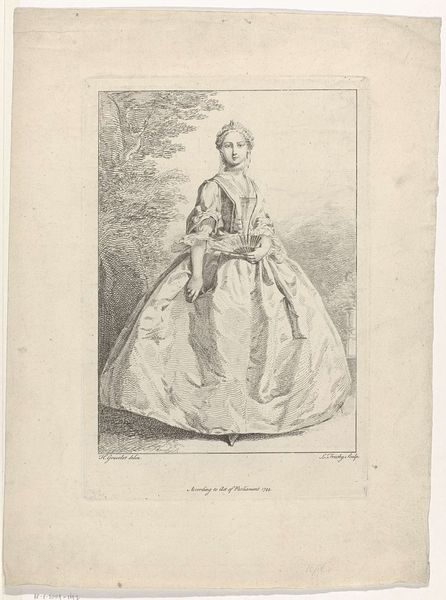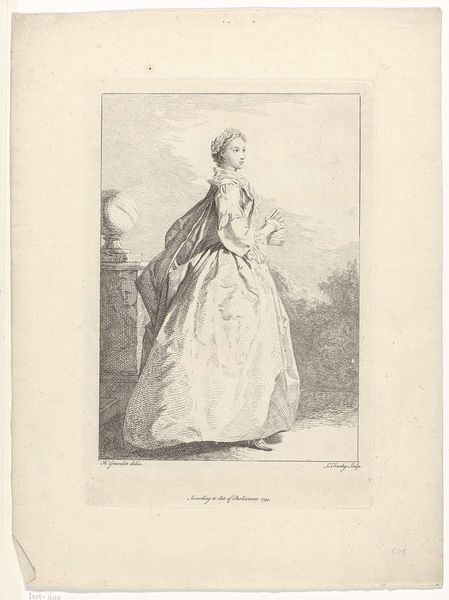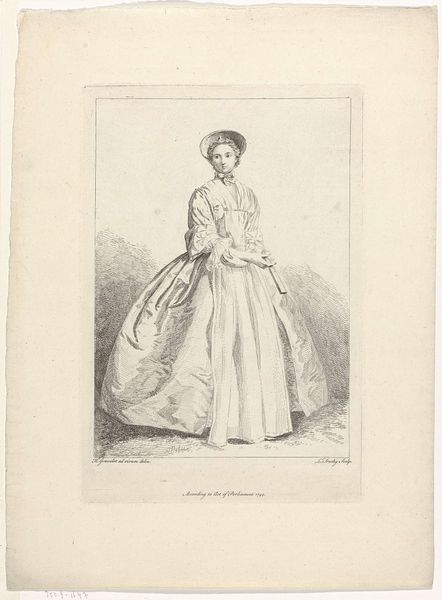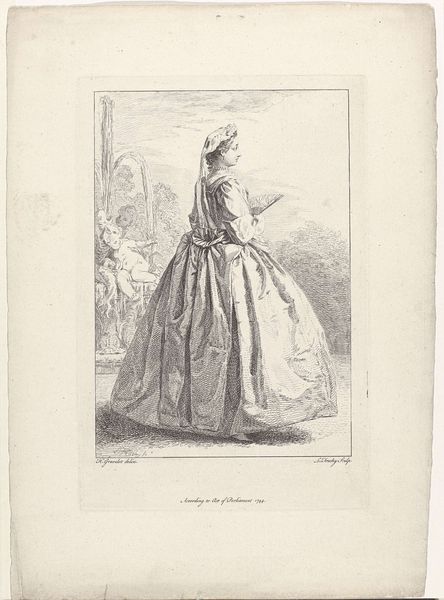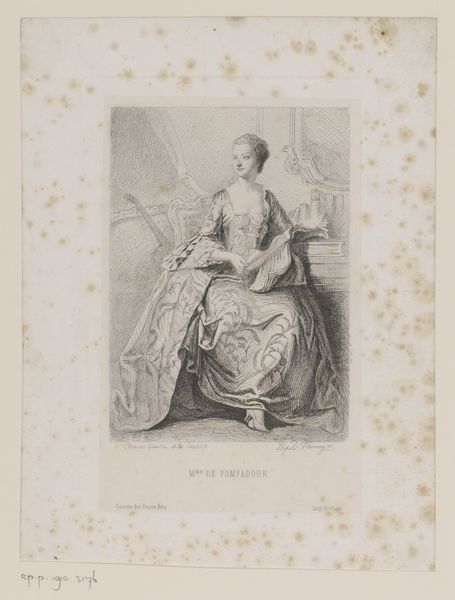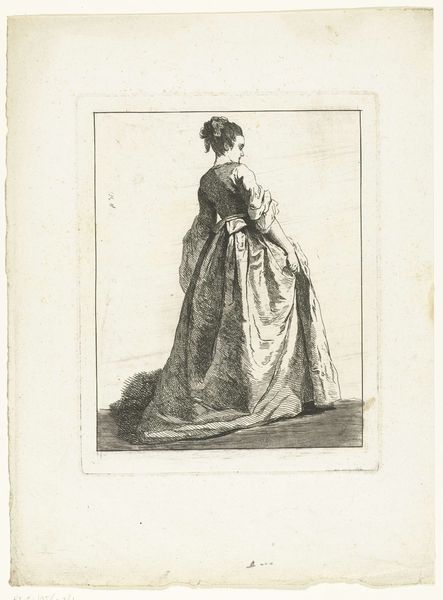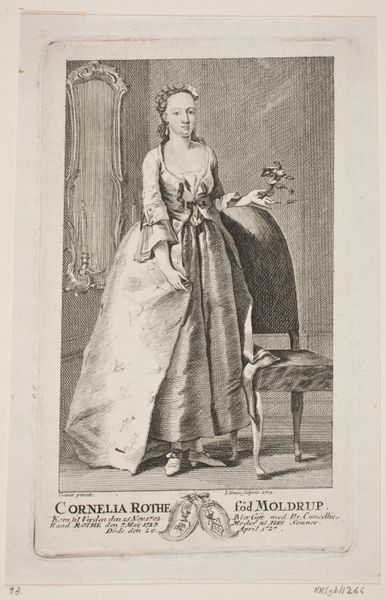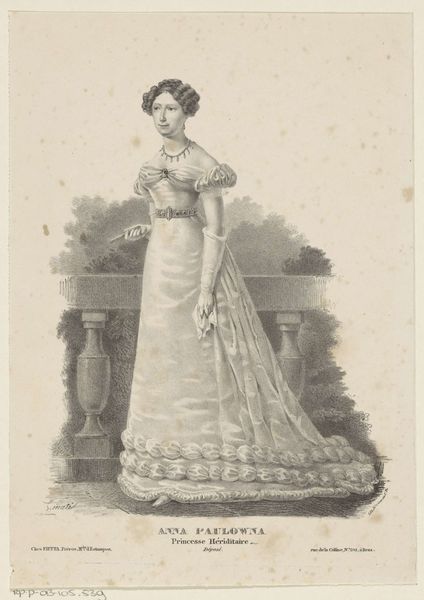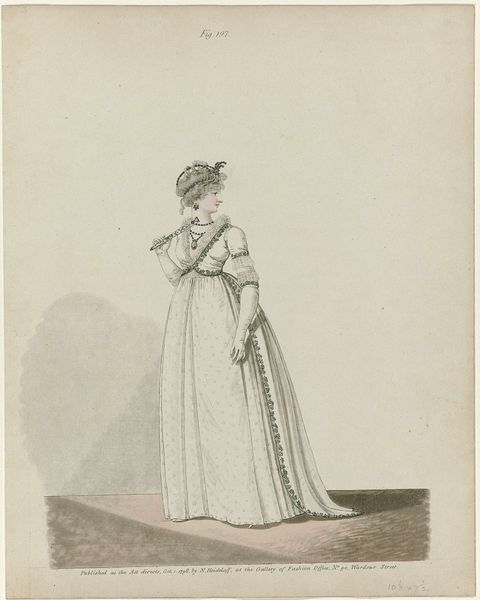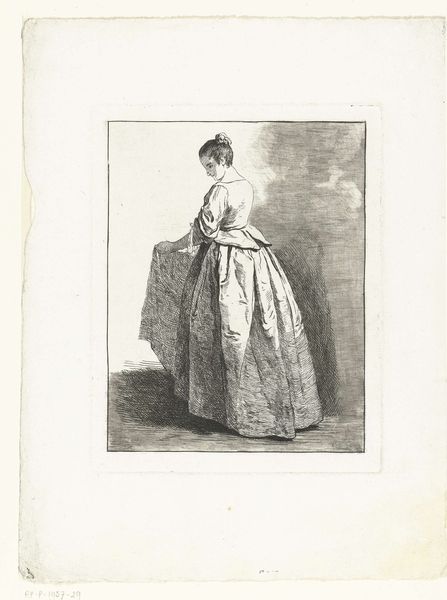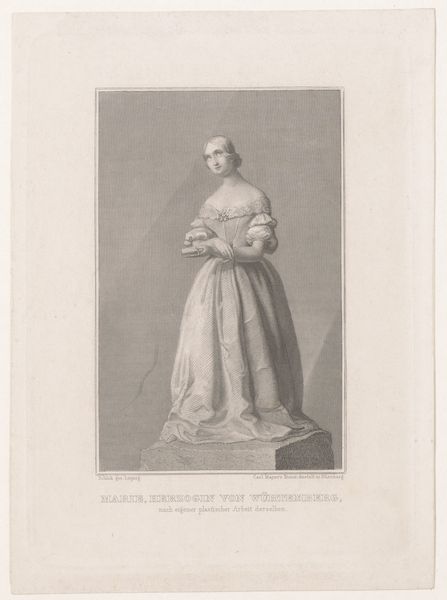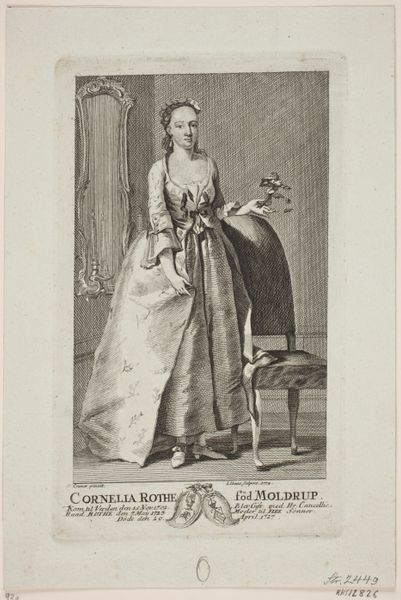
print, engraving
#
portrait
# print
#
old engraving style
#
genre-painting
#
dress
#
engraving
#
rococo
Dimensions: height 279 mm, width 187 mm
Copyright: Rijks Museum: Open Domain
Editor: This engraving, titled "Estampes de costumes, 1744, Pl. 4 (507)" by Charles Grignion I, showcases a woman in an elaborate dress. The detail in the fabric is quite impressive! What can you tell me about the historical implications of the fashion on display? Curator: What strikes me immediately is the rigid structure beneath the fabric. The clothing represents more than mere decoration; it signifies societal expectations and constraints imposed on women during the Rococo era. Consider how such attire limited mobility and independence. Editor: It’s interesting how the clothing itself becomes a sort of symbol. How would you connect this visual representation of gender and class to broader discussions around women's rights? Curator: We can analyze how fashion was utilized as a tool of control and how women navigated, and sometimes subverted, those limitations. How do you interpret her stance, her gaze? Do you find a sense of agency or merely a passive acceptance of her role? Editor: She looks serene, but perhaps there's also a hint of defiance? It’s hard to tell. This conversation made me think about how clothes have always been used as a way of either fitting in or standing out in society. Curator: Precisely. Understanding these visual cues enables us to decode the complex relationship between the individual and the structures governing her existence. Editor: I learned so much by looking at what might have seemed, on the surface, a mere fashion plate. Curator: Exactly. And fashion can act as a reflection of its cultural epoch.
Comments
No comments
Be the first to comment and join the conversation on the ultimate creative platform.
